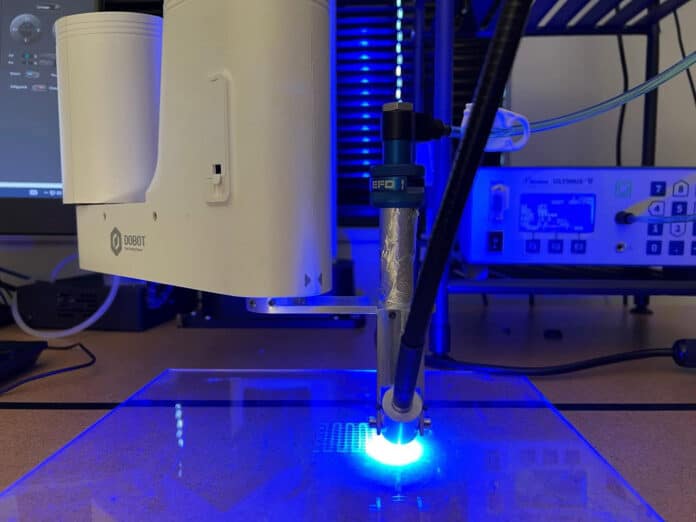Anthropogenic CO2 emissions in the past half century have caused an abrupt increase in atmospheric CO2 levels. It leads to an exacerbated greenhouse effect and global warming. Therefore, eliminating CO2 emissions from significant point sources is among the most critical mitigations for combating the climate change crisis.
In a recent study, scientists from North Carolina State University showed that 3D printing may be used to create carbon dioxide capture filters. They specifically created a hydrogel material capable of containing carbonic anhydrase, an enzyme that quickens the conversion of carbon dioxide and water into bicarbonate.
The study’s lead author Jialong Shen, assistant research professor of textile engineering, chemistry, and science at NC State, said, “This manufacturing process, using 3D printing, makes everything faster and more precise. You can make this functional material if you have access to a printer and the raw materials.”
Scientists mixed a solution containing two different organic compounds — or the printing “ink”- and an enzyme called carbonic anhydrase. They then printed thread-like filaments of the hydrogel into a two-dimensional grid. At the same time, they solidify the solution with UV light as it was printed.
The hydrogel was designed to be extruded into a continuous filament and mechanically robust enough to be 3D printed. Our cells, which contain enzymes in compartmentalized areas that are filled with a fluid and are filled with a fluid, served as the model for our design. Environments like those are ideal for enabling enzyme activity.
The effectiveness of the filter’s carbon collection was examined, and the scientists also evaluated the material’s characteristics to determine how well it would bend and twist. In a small-scale experiment, they discovered the filter caught 24% of the carbon dioxide in a gas combination. The filter was less than an inch (2 centimeters) in diameter. Still, it could be made larger and in other modular shapes to stack them in a tall column, even though the capture rate is lower than what they’ve achieved in earlier designs. That might improve the effectiveness of the capture.
Shen said, “In order to get a higher capture rate, we would need to make the filter larger in diameter or stack more filters on top of each other. We don’t think that’s an issue; this was an initial test at a small scale for ease of testing.”
When it comes to filtration durability, the material was found to achieve 52% of its initial carbon capture performance after more than 1,000 hours.
Study’s co-corresponding author Sonja Salmon, associate professor of textile engineering, chemistry, and science at NC State, said, “This work is still in the early stage, but our findings suggest there are new ways to make materials for carbon capture devices. We’re offering hope for carbon capture.”
Journal Reference:
- Jialong Shen, Sen Zhang, Xiaomeng Fang, Sonja Salmon. Carbonic Anhydrase Enhanced UV-Crosslinked PEG-DA/PEO Extruded Hydrogel Flexible Filaments and Durable Grids for CO2 Capture. Gels, 2023; 9 (4): 341 DOI: 10.3390/gels9040341
